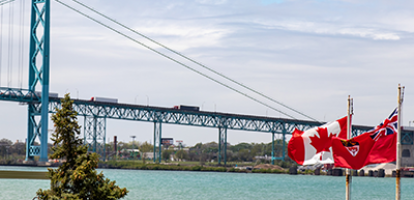From: Trevor Tombe
To: Hon. Deron Bilous, Alberta Minister of Economic Development and Trade
Date: October 25, 2016
Re: Five Ways to a Better Diversification Debate in Alberta
Alberta’s economy has seen better days. To many, the cause is clear: we’re over-reliant on oil and gas. Faced with this broad sentiment, the government is exploring various policies aimed at “economic diversification”. As its agenda unfolds, debate will only grow. Unfortunately, diversification is rarely defined explicitly and often motivates economically costly policies. We can do better, and some simple rules may help.
First, define the goal clearly. To the government, diversifying Alberta’s economy includes “adding value to areas we are already successful in” and creating a more “resilient” economy. By adding value, they mean refining and processing resources within Alberta. While it sure sounds good, it incorrectly applies the term value-added. It is also unclear what resilience means specifically. Using imprecise language can mislead the public and stifle debate.
Second, use objective measures. A common metric of diversification is known as a Herfindahl Index, which essentially measures how evenly distributed, say, employment is across sectors. Measured this way, Alberta is already the most diverse of any province. On the other hand, our GDP is more concentrated. So which aspect of the economic diversity matters more, and why? To have any hope of treating a condition, we must first diagnose it properly.
Third, distinguish short-run volatility from long-run trends. Volatility may be what concerns us most, as sudden unemployment or lost income is painful. Policies to deal with this, such as EI or precautionary saving, are different than those aimed at changing the economy’s overall structure. Long-run trends, such as technological developments, are difficult to either foresee or change. Instead, we should focus on the fundamentals to ensure a stable, flexible, and equitable economic and social environment.
Fourth, distinguish government budgets from the economy. Alberta’s deficit is large, but results less from a weak economy than from poor budget decisions by successive governments of all stripes. Past government relied too heavily on royalties, and the current government is no different. The current focus on broader economic diversification distracts us from the critical task of tackling our budget challenges.
Finally, focus on policy. Even if the objective is clear, it matters how we get there. Consider the most prominent policy to date: Alberta’s $500 million subsidy program for new petrochemical processing facilities. This may risk harming Alberta’s economy more than it helps. By subsidizing one area, workers and investment are reallocated away from alternative uses. These displacement effects are very real, and can often be large. To be sure, there are many areas where markets fail and resources are inefficiently allocated. There is a strong role for government in education, for example, or in areas of basic scientific research. But policies to address such market failures have little to do with diversification. To avoid doing more harm than good, we must ask where markets fail and avoid meddling where they don’t.
In short, base policy on evidence, not buzzwords. Pursuing diversification may sound good, and it may win votes, but if done poorly it may result in unnecessary economic costs.
Trevor Tombe is Assistant Professor of Economics at the University of Calgary and Research Fellow at the School of Public Policy
To send a comment or leave feedback, email us at blog@cdhowe.org.





